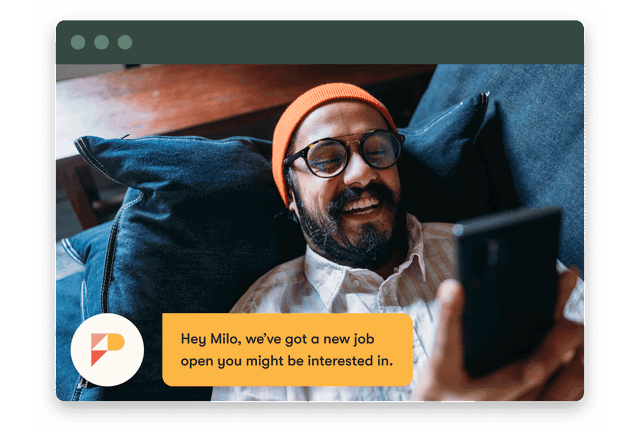Applicant Tracking System Software (ATS)
Applicant tracking software to help you attract, hire, and onboard talent
Applicant Tracking Software Features
Plan
Get less reactive and more proactive
- Position Management
- Job Requisition Management
- Reporting

Attract
Reach the right candidates, wherever they are
- AI Chatbot
- Branded Careers Website
- Job Board Advertising Software
- Employee Referral Software
- Recruitment Agency Portal
- Online Application Forms
- Sourcing Extension
- Multilingual Candidate Experience

Engage
Create a great experience for today’s candidates—and tomorrow’s
- Automations
- Talent Pool Software
- Candidate Profiles
- Candidate Communication Management
- Multilingual Candidate Experience
- Candidate Experience Surveys

Select
Bring every part of the selection process into the ATS for better decisions, faster
- Reference checks
- AI Custom Fields
- Interview Scheduling Software
- Video Interviewing
- Blind Recruitment Software
- Candidate Scorecards
- Offer Management Software
- Team Collaboration
- Hiring Workflow Management Software

Onboard
Personalize new hire onboarding at scale, with less admin
- Employee Onboarding

Benefits of an Applicant Tracking System
- Attract more of the right candidates
- Spend less time on recruitment admin
- Make hires faster
- Offer a better candidate experience
- Engage and empower hiring managers
- Improve the diversity of the candidates you attract and hire
- Reduce recruitment costs
- Make data-driven decisions
Teams that choose Pinpoint as their ATS have seen...
How would I summarize Pinpoint in one sentence? Game changer.
Got 30 minutes?
Schedule a demo to see how Pinpoint can transform the way you attract, hire, and onboard talent.
No hard sell. Just the chance to see if Pinpoint's right for you.
Discover how other businesses are getting the most from their ATS
Not only is Pinpoint a fantastic place for our entire team, our entire company to come together and be able to use, but it’s also extremely, extremely valuable as a recruiter.
Choosing an ATS? Start here
Read the ATS buying playbook. Everything you need to evaluate vendors with confidence.





